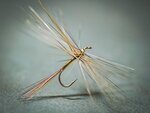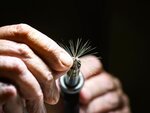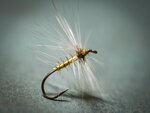At this writing on Sunday afternoon, July 14 (Bastille Day) it is 90 degrees outside, and it’s only noon! Our rivers and streams are low, as is pretty common for mid-July, with the Beaverkill …
This item is available in full to subscribers.
Please log in to continue |





At this writing on Sunday afternoon, July 14 (Bastille Day) it is 90 degrees outside, and it’s only noon! Our rivers and streams are low, as is pretty common for mid-July, with the Beaverkill at Cooks Falls flowing at 124 cubic feet per second.
This is below the Median average flow of 170 cfs over 110 years of record-keeping. The highest flow on this date was 3680 cubic feet per second in 2018; the lowest flow recorded on July 14 was back in the drought year of 1965 when just 49 cubic feet of water trickled past the gauging station.
Water temperatures over the past week have been warm, not surprisingly - ranging from a low of 71 degrees to a high of 81 degrees on the lower Beaverkill. The trout will be stressed under these conditions without much of a respite, and trout fishers will be wise not to fish for them in our “freestone” waters.
Better to seek out the tailwaters or head to the reservoirs or cool water lakes and give the stream fish a much-needed break, as this heat wave is predicted to bring “near record” temperatures for at least another week.
One way to beat the heat and still enjoy our favorite pastime is to head over to the Catskill Fly Fishing Center. On Saturday, July 13, the Saturday Catskill Fly Tyers Sessions continued, featuring Tom Mason as the guest fly-tyer in the air-conditioned Wulff Gallery.
There were a number of Catskill Fly-Tyers Guild members present, as well as visitors who wandered in and out all during the session.
Tom is an expert fly-tyer, and is a wealth of information on fly-tying and its rich history. (He confesses that he ties at least a fly a day, and has, over the past five to six years, photographed between 2000 and 2500 flies that he’s tied, cataloging each one as to name, pattern, where the pattern came from, and the like).
Saturday’s session ran from about 11:00 a.m. to 2:00 p.m. Tom tied a variety of flies, including a tiny size #24 Parachute Blue Winged Olive, a size #14 West Branch Sulphur, a size #10 Preston Jennings Gray Fox Spider, and a size #12 Dette Olive Badger.
I asked Tom about the Dette Olive Badger, as I really liked its beautifully palmered Badger hackle. Tom used his own take on the fly - and here is the pattern for the Olive Badger as tied by Tom:
Hook: Size 14
Thread: Pearsalls Gossamer Olive Silk
Body: Olive Silk
Rib: Silver Badger Black Tipped Palmered
Hackle: Silver Badger Black Tipped
An interesting aside is that John Alden Knight, back in the 1950s, dubbed it as the “Sunshine Fly” when he noticed it took fish more readily when fished in the open sunshine rather than in the long shaded bank stretches; the fly was the same Olive Badger that William Bayer Sturgis wrote about.
Tom also mentioned that way back in England, the Olive Badger was originally tied as a wet fly, and it came to this country where “we turned it into a dry fly” - most probably by William Bayard Sturgis.
“Everything comes from the north country flies from England,” he explains. These flies go back 1000 years and were passed down throughout the generations, probably handed down from father to son in diaries and by word of mouth. It’s fascinating to realize that many of the flies we tie and use today are derived from the same ‘recipe’ as they were so long ago!
Comments
No comments on this item Please log in to comment by clicking here